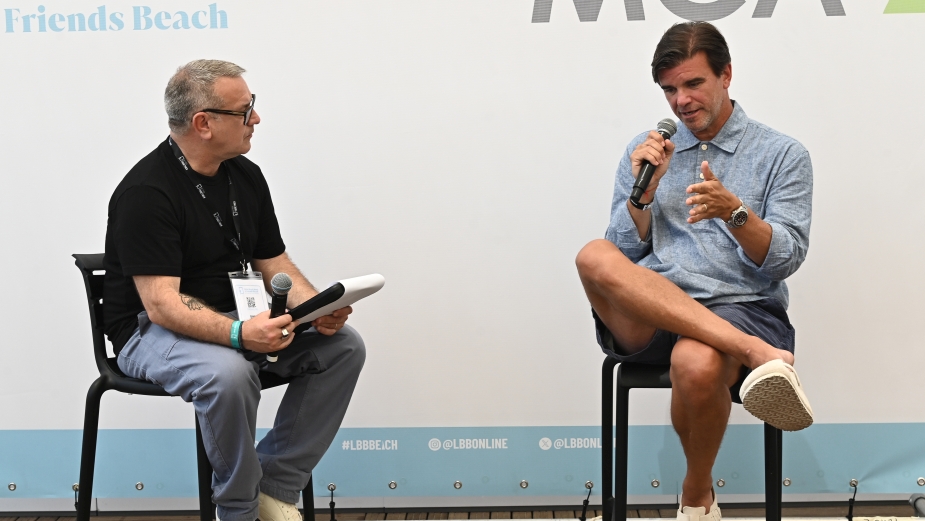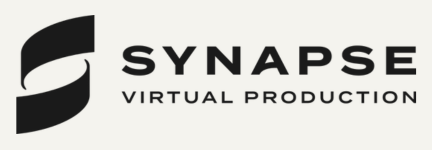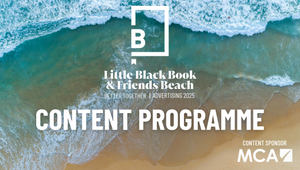
CCO No More? Andy Bird on Creative Direction in the Age of AI

“I wouldn’t say I’m a CCO anymore – that’s controversial… but I guess I’m just a creative!”
Andy Bird’s title may read ‘CCO’, but the founding partner of Publicis Groupe’s creative collective Le Truc is relishing his time back amongst the weeds.
“I’m a creative again. I’ve almost regressed back to the ‘90s,” he said, talking on a panel at the LBB & Friends Beach in Cannes. “I’m going on a shoot this afternoon, I’ve gone back to writing stuff, art directing, and that’s a Le Truc thing. It’s a very flat structure so we all have to muck in.”

Above: LBB's Matt Cooper with Andy Bird, Le Truc CCO
Always frustrated by the “daft process” that comes with the traditional agency structure – a CCO above an ECD, above CDs, ACDs and then the wider creative team – Andy has tried to flatten the hierarchy and create opportunities for all members wherever he has gone. “And have more fun doing it,” he added.
This flattened structure is very much suited to Le Truc, the now 70-strong New York-based unit that works across all of Publicis’ agencies and groups.
Discussing the evolution of creative direction, advertising and his own career – one shaped by early experiences at McCann Erickson and BBH under Sir John Hegarty – Andy was keen to emphasise the seismic shift that AI is currently having on his craft and across the industry.
Comparing the AI revolution to the introduction of the internet, the Mac and other digital tools, he shared that Le Truc uses Runway AI for internal films and pitches.
“In film production, clients want to see the film before the film. Before, you’d see the client and push a script across the table, and they’d buy that. Now, you pretty much press play and show them the film.”

Though, he admitted that AI can sometimes be a hindrance if overly relied upon. “You can do too much with it. You can almost take away too much of the joy and the beauty of filmmaking. Just because you can doesn't mean you have to.” He continued, “The accessibility of AI is sometimes too easy. You need to take a step back and, before you engage with it, think a bit more about what you want to get out of it.”
While he praised Runway’s near-production quality and usefulness with storyboarding, he did warn that it ‘gives directors less scope to do a treatment’ because a prototype has already been made. And furthermore, he reported that some clients don’t want AI to be used at all.
“It needs some governance, it needs looking after,” he said. “Creatively, it's like being a CCO or a creative director. You make sure that the work is to the standard you want it to be. I can always tell when somebody's used ChatGPT to write some copy because, actually, it's too good. It lacks that little bit of human emotion, it's almost too right, too perfect. But it's a great tool to start off writing. I use it to spark ideas.
“You still need that emotional intelligence to know what you need, and know what you want to do,” he added. “And that's that's never changing. I hope it never changes.”

Offering advice to young creatives who may soon be looking to lead a creative department in this new AI-enabled era, he suggested that everyone should ‘study a craft’ and other subjects outside of advertising. “That really helped me understand the emotion of the audience,” he said.
“I think you need to turn AI off when you learn. You have to learn the skills and then use those in conjunction with AI to get results.
“The principles will remain,” he added. “Art direction is a wide term, it can mean so many different things. I actually think learning craft is important, making sure your references are right and being free enough to try things…. Le Truc does that because we don’t work on one thing, we work on everything and our creatives have benefited from that. There’s less fear when you're working on different projects at different times.
“Having a looser structure is much better for young creatives,” he continued. “Having a more expansive palette and things to work on is so much better for them. I know people, now CCOs, who spent 10 years doing the same thing. We got them out of that, and now they’re thriving.”















